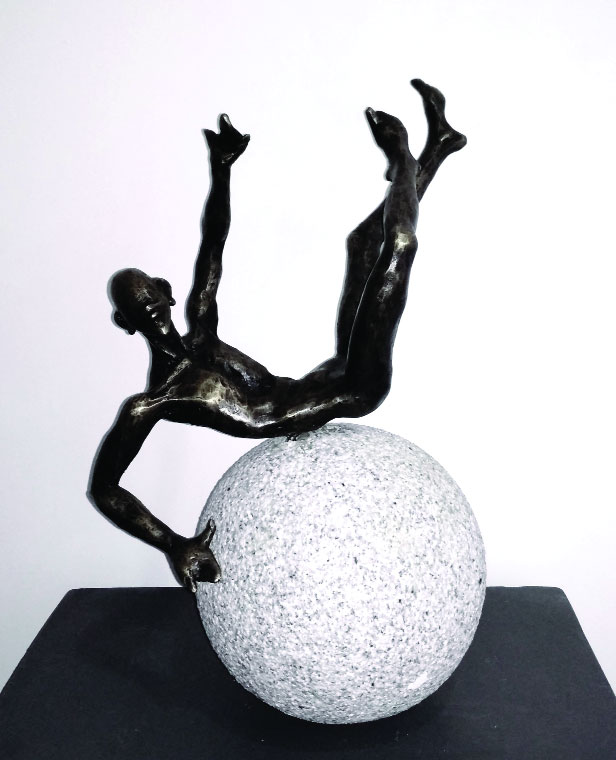Artist Dimpy Menon uses bronze figures to display different emotions. Ayushi Sharma covers her artwork and her story.
From emotions like joy to sorrow, aspiration to celebration, artist Dimpy Menon has tried to convey all aspects of humanscape in her works. With her elongated, elegant human forms that are sculpted in an acrobatic motion, she said that she conceived them as lyrical. “I have given the title as Breaking Bounds because it is basically about breaking boundaries and pushing limits. The forms in my works are very acrobatic and there’s a lot of movement in them. Although there has been a certain evolution over the years, the human form has remained central in all of my works,” said the sculptor.
She added, “I have used the 5,000-year-old lost wax process which has prevailed from the time of Mohenjodaro and Harappan civilisation. With progress and change, there has been a slight change in the treatment of the material. But otherwise the method is exactly same. It’s a long and gruelling process. One has to work at high temperatures. The metal will melt at about 900 degree centigrade. It’s a very arduous kind of job. It took me six months to create these sculptures.”
Lost-wax process is a method of metal casting in which a molten metal is poured into a mould that has been created by means of a wax model. After the removal of the mould, the resultant wax shell is filled with a heat-resistant mixture. Wax tubes, which provide ducts for pouring bronze during casting is fitted to the outside of the wax shell, which is then modelled by the artist. Next, the prepared wax shell is completely covered in layers of heat-resistant plaster, and the whole is inverted and placed in an oven. During heating, the plaster dries and the wax runs out through the ducts created by the wax tubes. The plaster mould is then packed in sand, and molten bronze is poured through the ducts, filling the space left by the wax. When it cools down, the outer plaster and core are removed and the bronze is given the final touches.
Irony is evident in her works as she has used a tough medium of bronze to create the sculptures that appear weightless and in flight. It kind of defies the gravity of law. The artist said, “It is difficult using something that is so heavy to symbolise and capture the essence of lightness. It’s not an easy acceptance of the way I have used the material.”
Dimpy seeks inspiration from life. She believes that the resilience of the human form, both in terms of spirit and body, is inspiring. She said, “If we set our minds on something it can easily be achieved. We are the epitome of creation. And as I’m a figurative artist, I really like how the audience can effortlessly and immediately relate to a human form. That is the reason my sculptures are loaded with expressions and with great values of humans. With each work there is a different emotion and different content. I have used it, as one uses language to express oneself. It’s the form that I have very lovingly nurtured and broken my back over. I have also used a lot of other elements too but the crust of my work has always been the human form. It majorly revolves around the human form, the rest is all embellishments.”
The curator and founder of Art Pilgrim, Gayatri Singh, said, “Dimpy has created the work that truly integrates with the space it is built for and hence it is for both homes and public spaces. Her sculptures depict emotions through action and body language. It is absolutely amazing how she manages to make a 100 kg bronze figure appear so light.”
Writer: Ayushi Sharma
Courtesy: The Pioneer








 OpinionExpress.In
OpinionExpress.In















Comments (0)